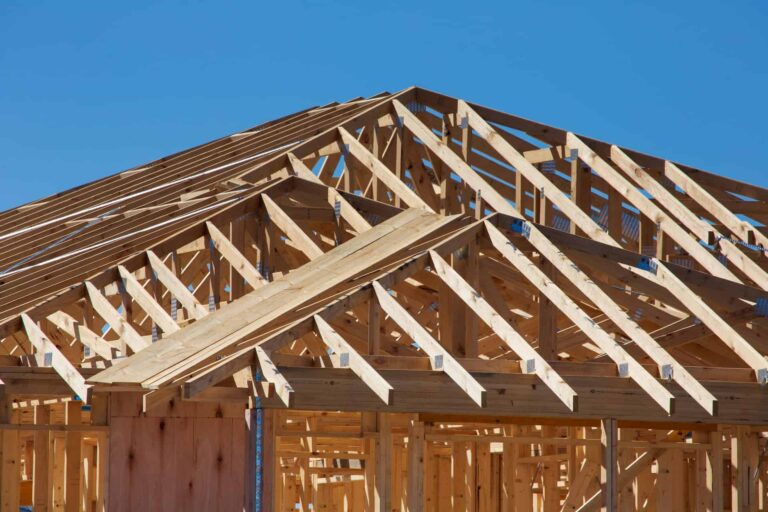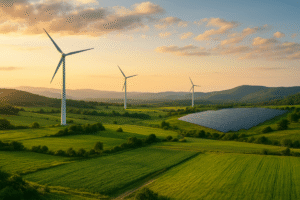There has been a major shift in recent years toward more sustainable and ecologically friendly methods in the construction industry. One of the most cutting-edge improvements that concrete might have was created in 2017 by a Dutch researcher (Hendrick Jonkers). He gave ordinary concrete the ability to repair itself by adding a small amount of a biological element to the mix.
To improve its qualities and lessen its negative effects on the environment, bio-concrete is a revolutionary new material that incorporates biological processes into the mix. It’s shaping up to be a major shift in the building industry.
Construction companies will save time and money by using this material because it can “heal itself” from damage such as cracks and breaks. When it comes to structural integrity and longevity, bio-concrete will be important in lowering the likelihood of a structure collapse.
This article seeks to provide a thorough overview of bio-concrete and analyze its various uses.
Table of Contents
An overview of bio-concrete
A form of concrete that integrates biological components to encourage self-healing and greater durability is known as bio-concrete, also known as self-healing concrete or biologically based concrete. Bacillus pseudofirmus or Bacillus cohnii bacteria, which, when exposed to water, can create calcite (a form of limestone), are the primary ingredients of bio-concrete.
Bio-concrete’s ability to self-repair cracks and damage increases its durability and decreases the need for costly maintenance.
The bacteria are contained in pellets or capsules and added to the concrete during production.
These capsules shield the bacteria from the cement’s damaging effects. Water seeping through fractures in the concrete stimulates the bacteria, which in turn triggers the synthesis of calcite. The cracks are effectively sealed as the calcite precipitates into them, stopping any further degradation.
Because the bacteria may remain active for so long, bio-concrete can be used in practical settings. They are latent within the clay pellets until a fracture is formed, at which point they are released into the environment.
Uses of bio-concrete
In 2015, studies on self-healing concrete began to emerge, piquing the interest of construction industry players such as contractors, cost predictors, engineers, and others who might benefit from implementing bio-concrete into their workflows.
Due to its many advantages, this material is likely to be widely used in the near future. The following are some of the ways in which construction firms can benefit from using bio-concrete.
1. Enhanced longevity and durability
Bio-concrete is used primarily by the building industry to increase the strength and lifetime of their projects. Cracking and damage in conventional concrete can be caused by a number of sources, including temperature fluctuations, shrinkage, and external forces.
Because of its self-healing characteristics, bio-concrete can mend these fissures and keep its shape even as time passes. This makes it an excellent choice for use on busy roadways, tunnels, and bridges.
Recently, durability tests were conducted to determine the strength and longevity of bio-concrete. The results indicate that, given the right composition, the material should persist for more than two centuries. This also means that the clay pellets in the biochemical combination can withstand a wide range of environmental and mechanical stresses.
2. Useful for a wide variety of physical structures
Bio-concrete has a wide range of potential applications. Bacillus bacteria’s adaptability makes them useful for a wide range of infrastructure applications.
This material’s versatile use can lead to exciting new discoveries in engineering, microbiology, and building. You can save money on future projects, try out new ideas, have longer-lasting buildings, and reduce costs overall.
3. Reduced expenses
Building companies can save a lot of money by using bio-concrete. Entire lifecycle costs of structures built with bio-concrete can be decreased by eliminating or drastically reducing the requirement for manual maintenance and repairs.
Because of their superior durability, bio-concrete buildings also save money in the long run because they don’t need to be replaced as often.
4. Conservation-friendly measures
The advantages of bio-concrete go far beyond its monetary uses. Commercial and residential construction projects can have smaller environmental impacts by using this material to cut down on carbon emissions.
Less concrete will be needed for upkeep and repairs, which will reduce carbon emissions over time. Our industry’s future lies in eco-friendly building practices, and bio-concrete is leading the charge.
5. Restoring a healthy ecosystem
Ecological restoration initiatives are another application for bio-concrete in the building industry. Because of its self-healing qualities, bio-concrete is useful for the construction of artificial reefs and other marine life habitats because it promotes the healthy development of coral reefs and other aquatic ecosystems.
In addition to helping preserve biodiversity, this software can lessen the severity of coastal erosion.
6. Putting a stop to tiny leaks that might develop into major ones
Bio-concrete’s ability to fill in tiny fissures inside bigger concrete slabs is one of its most promising uses. When these tiny fissures in a building, bridge, or other structure are allowed to widen, the resulting damage can be catastrophic.
With bio-concrete, even fissures as narrow as 0.8 mm can be sealed to head off costly structural failure.
A remarkable innovation
Bio-concrete is a revolutionary product that uses biology to improve the longevity, sustainability, and low impact of building projects. Self-healing qualities gained by the introduction of microbes make it a promising option for building infrastructure.
Bio-concrete has several uses in the construction industry, and its advantages include increased longevity, sustainable infrastructure, financial savings, better aesthetics, and ecological restoration.
Read also: What is the Urban Sequoia, the technological skyscraper that actively absorbs CO2












